Things to do in Cork
When deciding what to see in Cork, it is a good idea to keep itineraries flexible to compensate for the unpredictable Irish weather. However, there are plenty of indoor and outdoor attractions. Popular things to see in Cork include the 19th-century Cork City Gaol, the protestant Finbarr's Cathedral, the Church Tower of Shandon, and the Cork Museum, which is largely given over to the nationalist struggle in which Cork played an important role.The Old English Market is a foodies dream, with top-quality fresh produce of all kinds. There's also Patrick Street, a road full to bursting with restaurants and shops and with many quaint pedestrianised side streets.
Cork is a wonderful base for exploration in the south of Ireland. Blarney Castle, one of Ireland's most famous attractions, is just outside of the city and dates back to 1446. Popular day trips from Cork include Kinsale, a picturesque and interesting coastal village known for its culinary delights, and the beautiful coastal scenery of County Kerry, including the Dingle Peninsula.
Cork is known to have less traffic than Dublin and it is relatively easy to navigate. For this reason, and because visitors usually intend to explore the many wonders beyond the city, visitors often choose to hire a car. However, Cork has a decent public transport system and visitors won't struggle to get from attraction to attraction within the city.
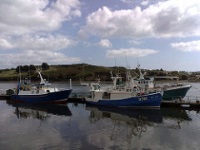
Kinsale
Kinsale is an old fishing village just 18 miles (29km) south of Cork. It's best known for the world renowned Old Head Golf Links, which are set on a narrow head jutting out into th…
Kinsale
Kinsale is an old fishing village just 18 miles (29km) south of Cork. It's best known for the world renowned Old Head Golf Links, which are set on a narrow head jutting out into the Celtic Sea. Kinsale has a number of interesting sights, including The Courthouse and Desmond Castle.
Desmond Castle was built as a custom house by the Earl of Desmond in the 16th century. It has a colourful history, ranging from Spanish occupation during the Battle of Kinsalein in 1601, to its use as a prison for captured American sailors during the American War of Independence. It is known locally as 'The French Prison' after a tragic fire in which 54 prisoners, mainly French seamen, died in 1747. The castle was also used as a borough jail from 1791 to the beginning of the Great Famine, when it became an auxiliary workhouse tending to the starving populace.
Charles Fort is two miles (3km) outside Kinsale. Constructed in the late 17th century on the site of an earlier coastal fortification, it is a classic example of a star-shaped fort. William Robinson, architect of the Royal Hospital in Kilmainham, Dublin, and Superintendent of Fortifications, is credited with its design. As one of the largest military forts in the country, Charles Fort has been associated with some of the most momentous events in Irish history, the most significant of which include the Williamite War in 1690 and the Irish Civil War in 1922 to 1923. James Fort sits across the estuary. It is an earlier structure that was designed by Paul Ive in 1602.
Kinsale has also earned itself a reputation as Ireland's gourmet centre, with numerous award-winning pubs and restaurants, and the annual Gourmet Festival in October.
Website www.kinsale.ie
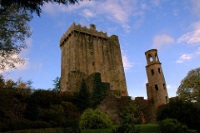
Blarney Castle
Built around 1446, Blarney Castle is one of Ireland's oldest and most historic castles. An ancient stronghold of the MacCarthys, Lords of Muskerry, and one of the strongest fortres…
Blarney Castle
Built around 1446, Blarney Castle is one of Ireland's oldest and most historic castles. An ancient stronghold of the MacCarthys, Lords of Muskerry, and one of the strongest fortresses in Munster, its walls are 18ft (5m) thick in places. Located on the parapet of the castle is the famous 'Blarney Stone'. According to local legend, after kissing this stone, one will have the gift of eternal eloquence, or 'the gift of the gab'. To do this, visitors must first position themselves on their back, then lean their head back and downwards over the edge of the battlements, with the help of an attendant, in order to kiss the underside of the stone. This is a rather scary process but the fear is part of the thrill.
The grounds of this magnificent ruin are an attraction in themselves, with well-maintained pathways and great natural features that are worth exploring for several hours. There is a Poison Garden full of dangerous and deadly plants, and a magical rock passageway. Visitors should walk down the Witch's Steps backwards for good luck!
Blarney Castle is one of Ireland's most famous attractions and it can get very crowded in the summer season. Guests should visit early to avoid queuing for entry and to kiss the stone. The last admission to the castle and grounds is 30 minutes before closing.
Website www.blarneycastle.ie
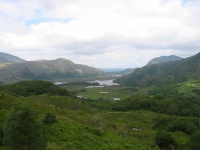
County Kerry
Kerry County is widely regarded as the most beautiful region in Ireland. It's the country's most popular tourist destination with its rugged scenery, picturesque villages, coastal …
County Kerry
Kerry County is widely regarded as the most beautiful region in Ireland. It's the country's most popular tourist destination with its rugged scenery, picturesque villages, coastal resorts and wealth of attractions. The panoramic Ring of Kerry drive on the Iveragh Peninsula affords spectacular views of Ireland's highest mountain, the Lakes of Killarney, and the stunning coastal scenery. There are also many ancient and historic sites along the way, including the incredible ruins on the Skellig islands. The Killarney National Park is also renowned for its beauty and variety of outdoor activities. The Dingle Peninsula has magnificent coastal scenery and is the westernmost point of Europe. Villages like Kenmare and Dingle offer a wonderful glimpse of traditional Irish life. Fresh seafood and authentic music make any visit a delight.
County Kerry is a paradise for outdoor enthusiasts, ideal for boating, fishing, walking, golfing and cycling. The Ring of Kerry is best enjoyed during the summer months as bad weather reduces visibility. Even in thick fog, it is an enchanting region that makes its way onto most Irish travel itineraries and seldom disappoints.
Website www.discoverireland.ie/kerry
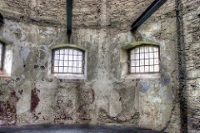
Old City Gaol
The old Cork City Gaol looks the same as it did in Victorian times, with its barred windows, cells, bare corridors and iron stairways behind the unwelcoming gateway. The gaol once …
Old City Gaol
The old Cork City Gaol looks the same as it did in Victorian times, with its barred windows, cells, bare corridors and iron stairways behind the unwelcoming gateway. The gaol once incarcerated 19th century prisoners. The building was built in 1824 and is considered one of the finest examples of Georgian architecture surviving in Cork.
Self-guided audio tours are an option. Life-size figures, sounds and exhibitions tell the story and social history of 19th century Cork and the reasons people turned to crime, which was mainly due to extreme poverty. Visitors can still see the graffiti that prisoners carved or wrote on the walls, and there are many interesting facts and stories to be heard. Unsurprisingly, the Cork City Gaol is said to be haunted, which is very easy to believe when strolling through the formidable building.
The tour is available in 13 languages and it really does transport visitors into another century. Children will enjoy this attraction and it is a good activity for the whole family. Although it is popular, it never seems too crowded, which adds to the eerie atmosphere.
Website www.corkcitygaol.com
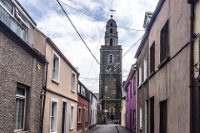
Church Tower of Shandon
Positioned on a hill overlooking the River Lee, the Church Tower of Shandon (Old Fort) is possibly Cork's most famous landmark. The red sandstone and white limestone tower is crown…
Church Tower of Shandon
Positioned on a hill overlooking the River Lee, the Church Tower of Shandon (Old Fort) is possibly Cork's most famous landmark. The red sandstone and white limestone tower is crowned by a large, salmon-shaped weather vane. It was built in 1722, making it one of Cork's oldest buildings, and is still perfectly preserved. The Church of St Anne is famous for its bells, which inspired the song 'The Bells of Shandon', and also for its clock, which is referred to as 'the four-faced liar' because each of its four faces reads a different time. Visitors can ring the famous bells on a visit to St Anne's and view the internal workings of the clocks.
The views of the city from the bell tower's balcony are stunning. The staircase up to the top of the tower gets quite narrow, which is a delight for some but perhaps shouldn't be attempted by the claustrophobic. The church itself is also a joy to explore for those who are interested, and the people who work there are very helpful and friendly. The church is located in the historical section of the city, so a visit can be combined with a stroll through the charming old area, which has many other attractions.
Website www.shandonbells.ie
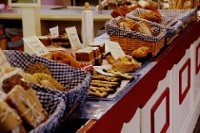
The English Market
The 16th century Princes Street Market is a covered food market in the centre of Cork. A large sign now designates it the Old English Market (and the nearby St Peter's Market is re…
The English Market
The 16th century Princes Street Market is a covered food market in the centre of Cork. A large sign now designates it the Old English Market (and the nearby St Peter's Market is referred to locally as the Irish Market), although it is certainly Irish in character. The Queen and Prince Philip visited the market in June 2011, cementing its association with the English.
Merchandise on sale includes fresh fruit and vegetables, baked goods, cheese, meat, seafood, gourmet chocolate, sweets, clothes, and local crafts, trinkets and souvenirs. It is well known among locals and tourists alike for its varied selection of produce from all over the world, and especially for its fresh fish. The merchants are very friendly and the place has a wonderful atmosphere. It's a good idea to ask the stall owners for their recommendations and try out some local specialties. Visitors can buy a take-away meal, gifts for those back home, or groceries at the Old English Market. Those who enjoy the place should try the Farmgate Restaurant, where they can sit on the balcony overlooking the stalls and relish the smells and sights along with a great meal.
Website www.englishmarket.ie/



